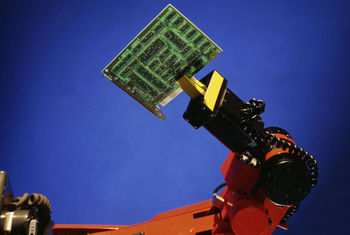How to Build a Robot
Want to learn how to build a robot? Let’s start out by understanding what a robot is and how it works.
The word “robot” refers to any automatically guided machine that is capable of performing tasks on its own. This basic definition means that the simplest machines that perform menial tasks repeatedly are classified as “robots”. In fact, the first “robot” put to use was a simple machine that cut and stacked pieces of sheet metal. Not exactly the stuff of science fiction, but an important tool nonetheless.
Basically, a robot is a computer or machine with any kind of mechanical body, usually designed to do a specific job. Robots are able to move and use one or more electronic sensors to operate. These sensors are not yet as powerful or finely tuned as our own senses of sight and sound (for example), but robotic technology is improving all the time. The latest robots are learning to sense the world around them and react to it, much the way a human being would.
Building Your Own Robots
Building your own robots is going to cost you a little bit of money. If you don’t have robot materials laying around your garage, you’ll need to stock up on some basic parts. Expect to spend a few hundred dollars for even the most basic robot. Once you’ve built a few robots, you may find that you’ve got left over parts to use, meaning your other robots will be less expensive.
The first step to building a robot is design. Before you get ahead of yourself, plan on making a simple robot with two wheels that drives itself backwards, forwards, and side to side. This sounds simple, but the complex workings of a robot mean that even the most simple design — such as a differential drive for a two-wheeled robot — can be hours of work with little reward.
Robot Parts

How to Build a Robot
Buy the parts you’ll need for the design you’ve chosen. For a simple two-wheeled robot, you’ll obviously need wheels. You’ll also need motors or servos to get your robot moving. Don’t forget power — purchase a battery (either alkaline, nickel-cadmium, or nickel metal hydride) to get your robot the power it needs. A power regulation circuit is necessary to keep your robot moving in something akin to the direction you want — micro controllers are available for purchase, since building your own may be too tall an order for your first robot.Other parts you’ll need are a programmer, a remote control system, sensors, and a chassis (or body) for your robot.
Sound expensive and hard? It is. If you thought building your first robot would be a walk in the park, you obviously haven’t seen many robots in action. Robotics is a complex and fun hobby, and one that you can easily turn into a career. The skills you learn in building your first robot are easily applicable to engineering, mathematics, and even engine repair. Even if your first robot is a bust, remember to have fun. Building a dud robot isn’t the end of the world.
